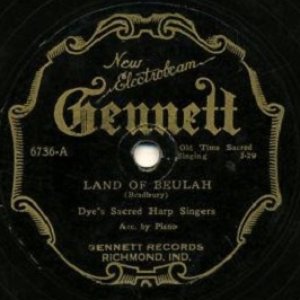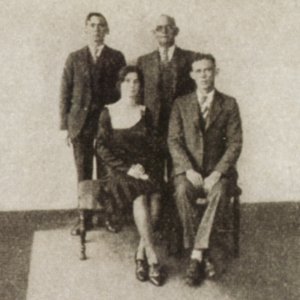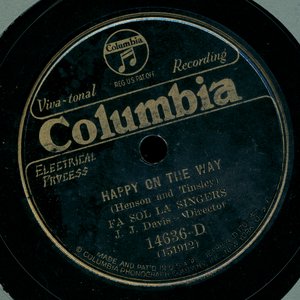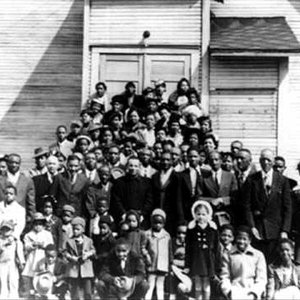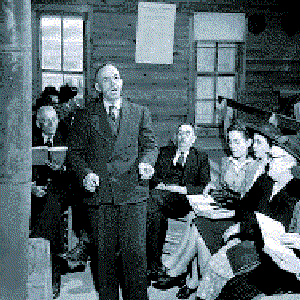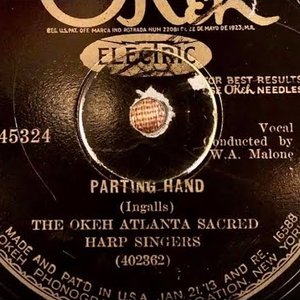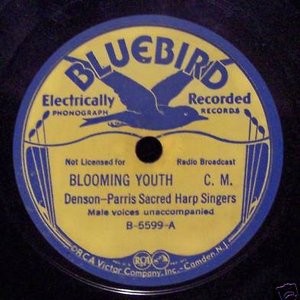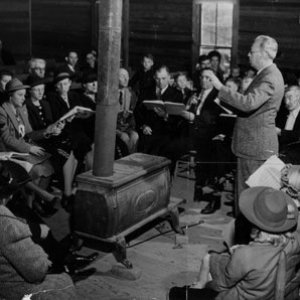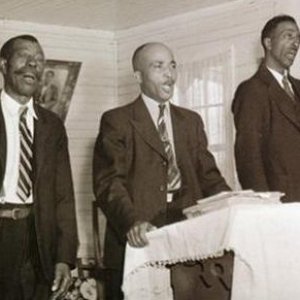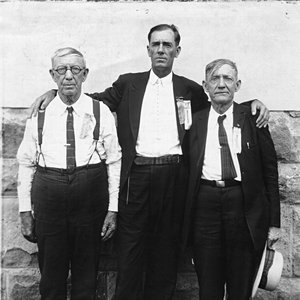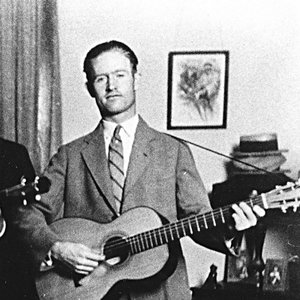Biography
J. T. ALLISON'S SACRED HARP SINGERS
notes by John Bealle and Joyce Cauthen
In the storied history of Sacred Harp singing, the 1927-1928 recordings by J. T. Allison's ensemble represent a curious anomaly. For these recordings are rare instances of the convergence of two important cultural movements of the southeastern U.S.-the emerging country music recording industry and the impressive tradition of singing religious folk music from shape-note tunebooks. The Allison group traveled from their homes in Birmingham and Moody, Alabama, to the legendary Gennett recording studio in Richmond, Indiana. What things led them to do this is of much importance here, as is what things led many others not to.
The Sacred Harp
The music the Allisons recorded would have been sung directly from The Sacred Harp, a book first compiled in 1844 in Hamilton, Georgia. This musical volume is a shape-note tunebook, meaning that the music was printed in shape-note musical notation to aid in music reading. The Sacred Harp uses four shapes, so its music is sometimes called "fasola" music for the names of the notes of the scale, "fa-sol-la-fa-sol-la-mi-fa" (as opposed to the more-familiar "do-re-mi" seven-shape system, "do-re-mi-fa-sol-la-ti-do"). The shape-note system derives from the singing school tradition installed in eighteenth century New England whereby public singing classes were held with the purpose of improving the music in the churches. Around 1800, shape-note notation was devised-assigning shapes to the note heads to represent degrees of the musical scale-to aid in learning and reading. The movement spread south and west with the population, accumulating local styles and repertoires in the process. This practice spread widely in music publishing, so that by the mid-nineteenth century there were many tunebooks printed in shape-note notation. The shape-note system declined over the nineteenth century as the now-familiar round-note notation was increasingly adopted in church music and European art music.
Among the many books in its genre, The Sacred Harp achieved distinction largely due to its amazing longevity-it has been in print and in active use continuously since the first edition. In this, much is owed to the promotional strategies of one of its compilers, B. F. White. In the year following the book's publication, White and his colleagues devised an institution, the public singing convention, that would ultimately provide the sustained usage with which the book is now associated. That is, rather than merely promoting the book personally as most other tunebook compilers did, White assembled a committee of officers for the convention whose membership could be passed on, thereby providing an organizational structure that would endure after his death. As Sacred Harp singing spread, the singing convention system was pivotal in providing for local proprietorship in new areas.
The course charted by the convention system had a profound impact on the way Sacred Harp was experienced throughout its history. The mainstay of Sacred Harp tradition was and still is the large public gatherings-all-day singings or multiple-day conventions-where throngs of singers gather for an intense musical and spiritual experience. There the emphasis is on participation and not performance-most everyone comes to sing, and there is often no discernible audience. Sacred Harp singings incorporate components of the singing school tradition-such as singing the names of the shape notes for each song before singing the text-but there is no formal instruction. As many as a hundred songs are sung in a day, most at "full throttle." A typical singer, by one colorful account, wouldn't cross the street to hear Sacred Harp music, but would walk a mile in the snow to sing it.
The Allisons traveled 500 miles to the Gennett studios in Richmond, Indiana, to record Sacred Harp with the hope of selling the recordings at home. It is important to recall the musical environment from which they came. More so than any other style of music that entered the country music system of genres, Sacred Harp singing featured a performance environment that predated country music recordings, that was only minimally influenced by the style of music featured on recordings, and that endured moments of exposure in popular culture with little evidence of being absorbed by it.
Artist descriptions on Last.fm are editable by everyone. Feel free to contribute!
All user-contributed text on this page is available under the Creative Commons Attribution-ShareAlike License; additional terms may apply.

